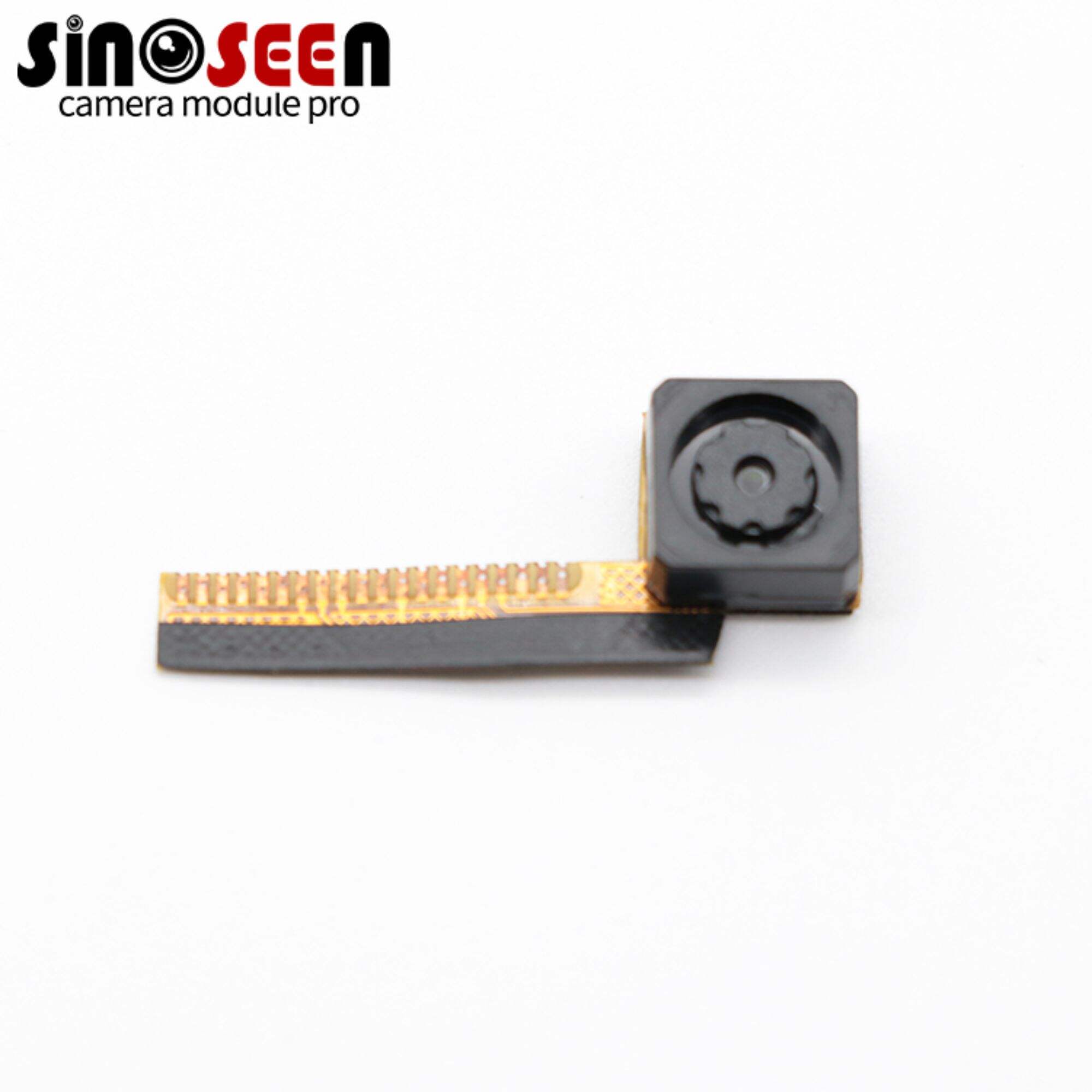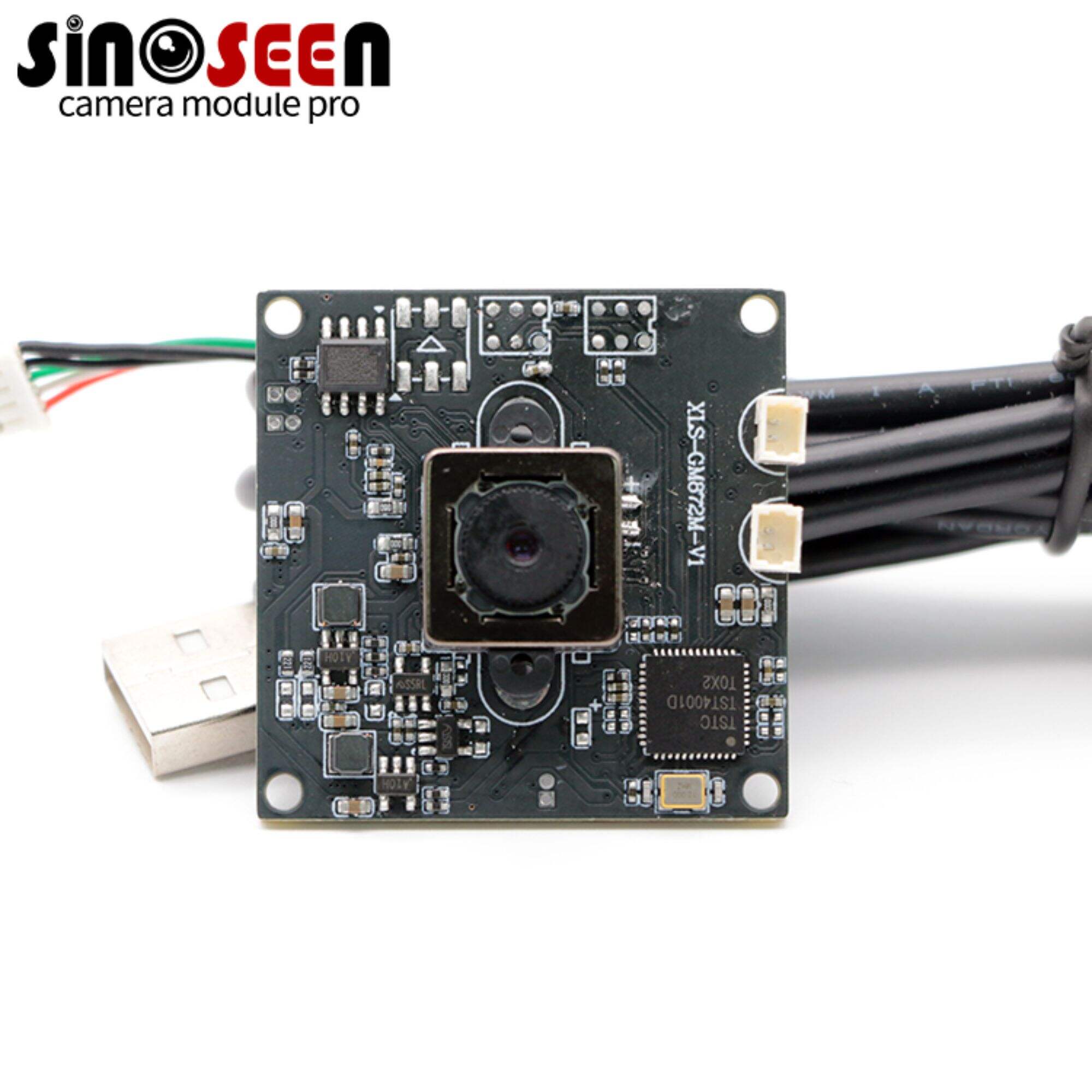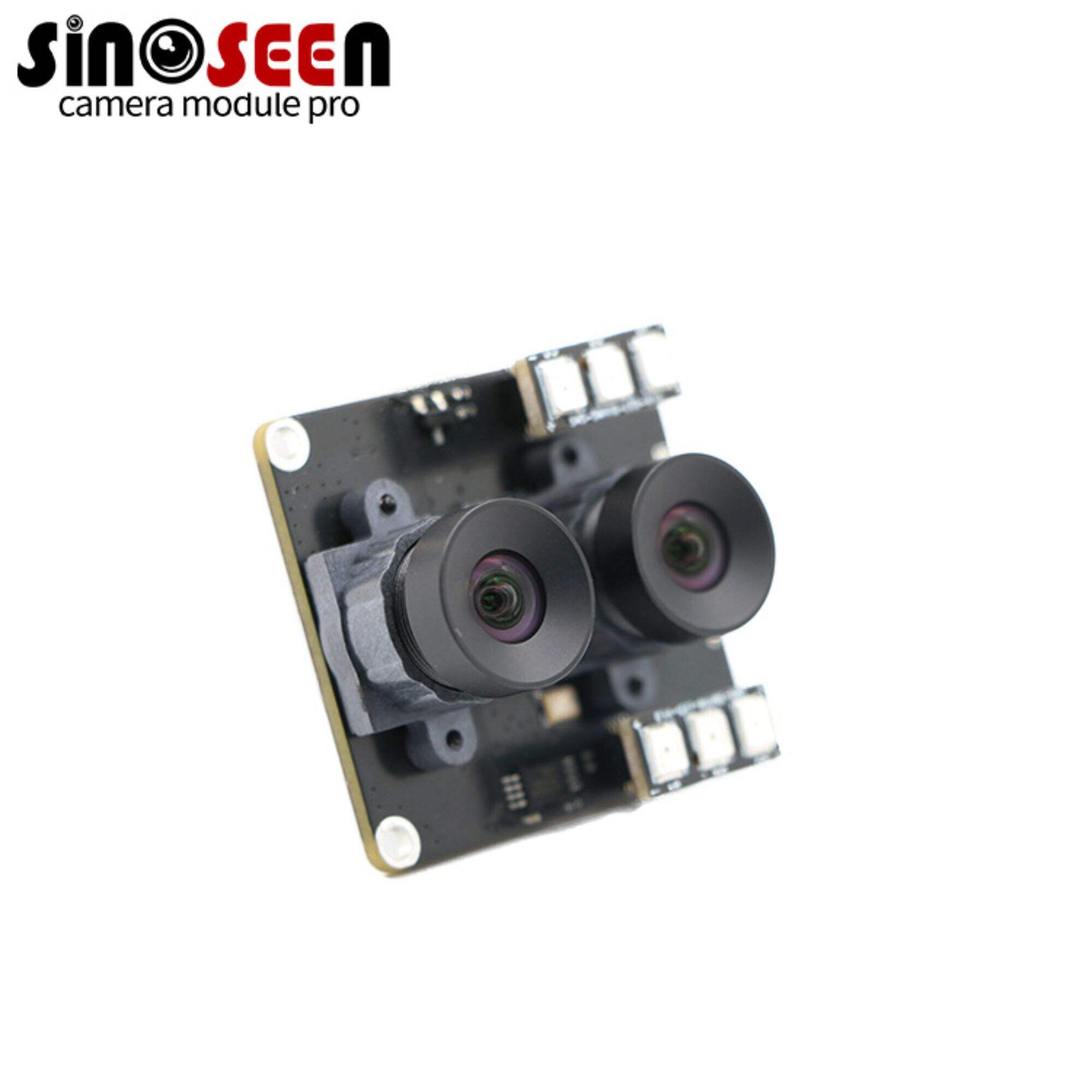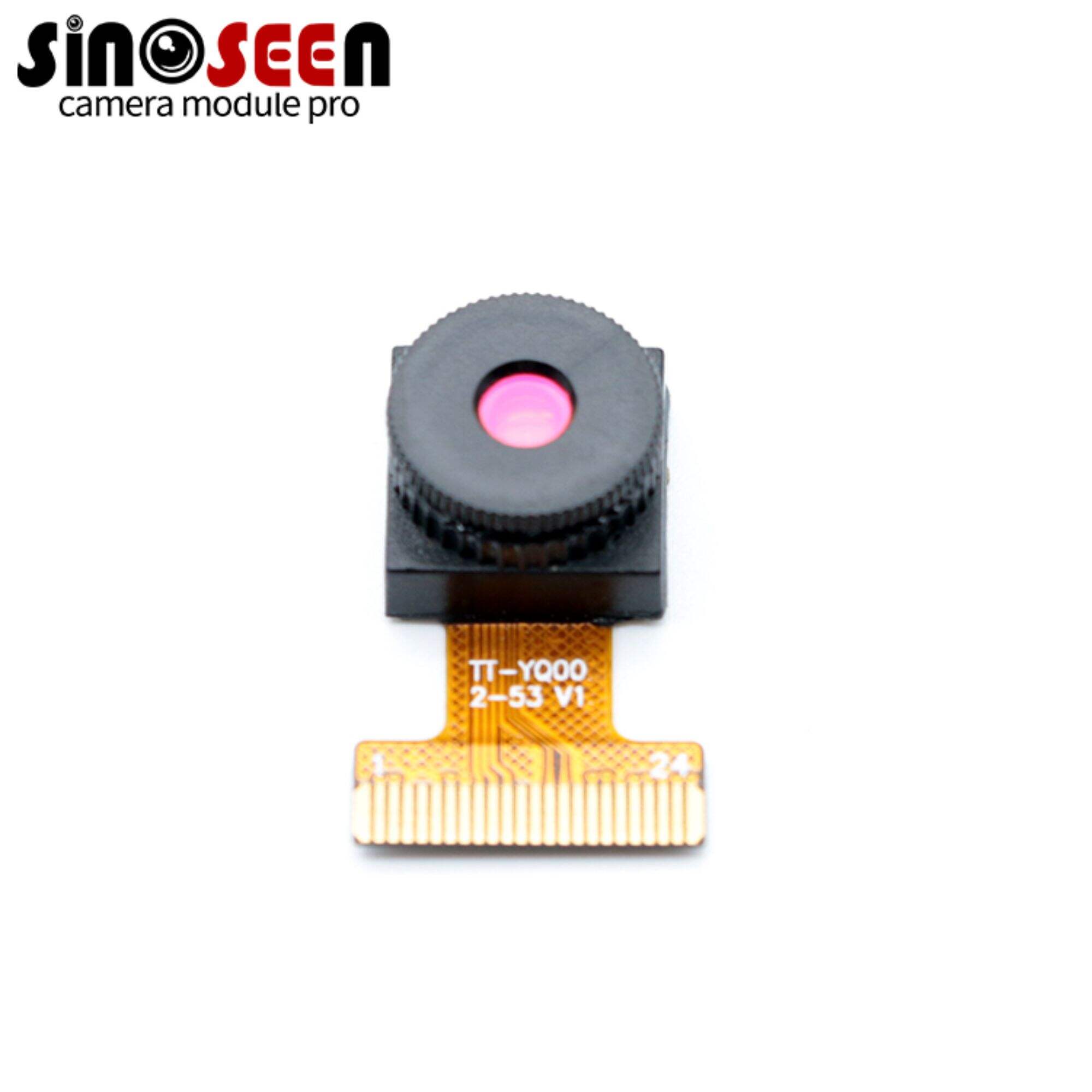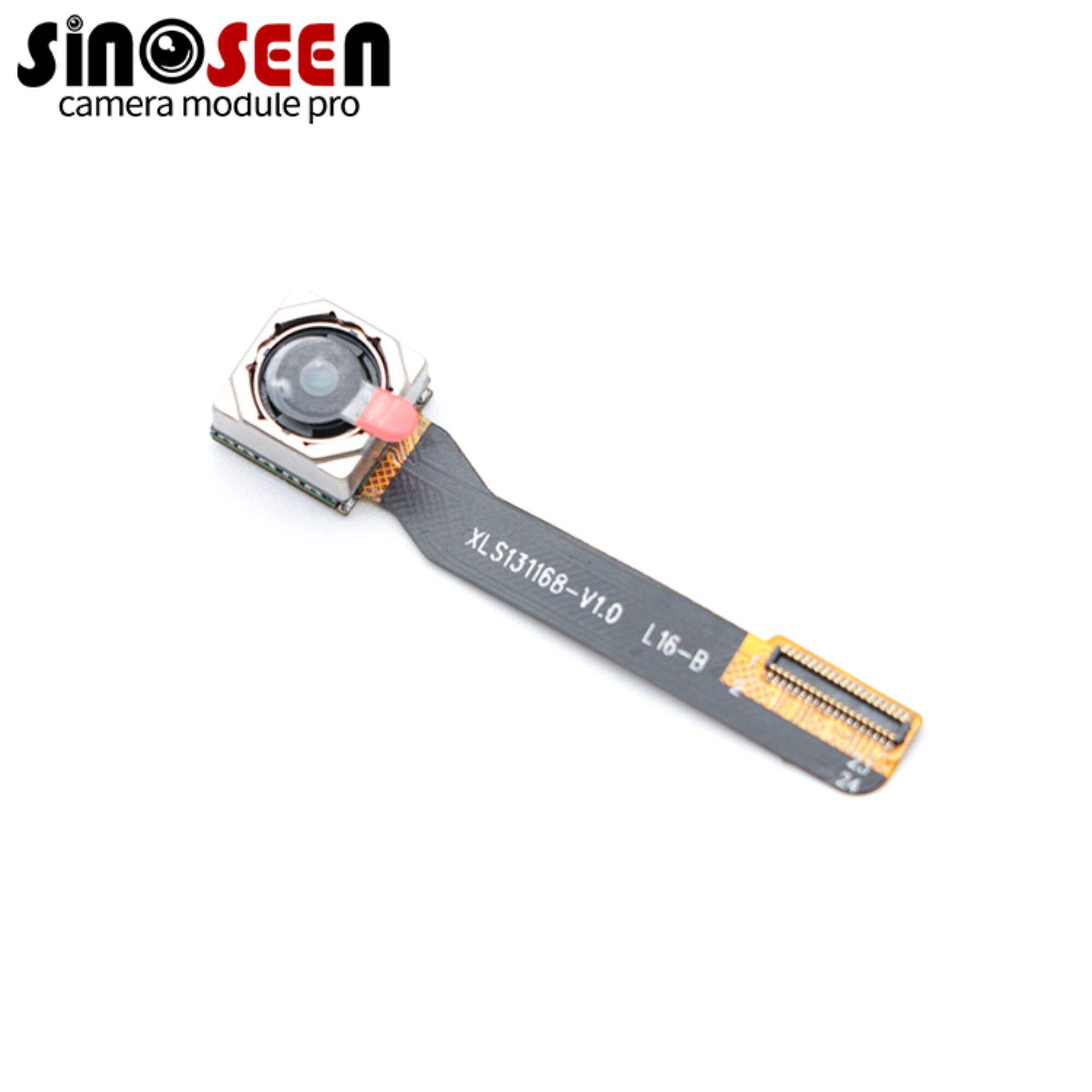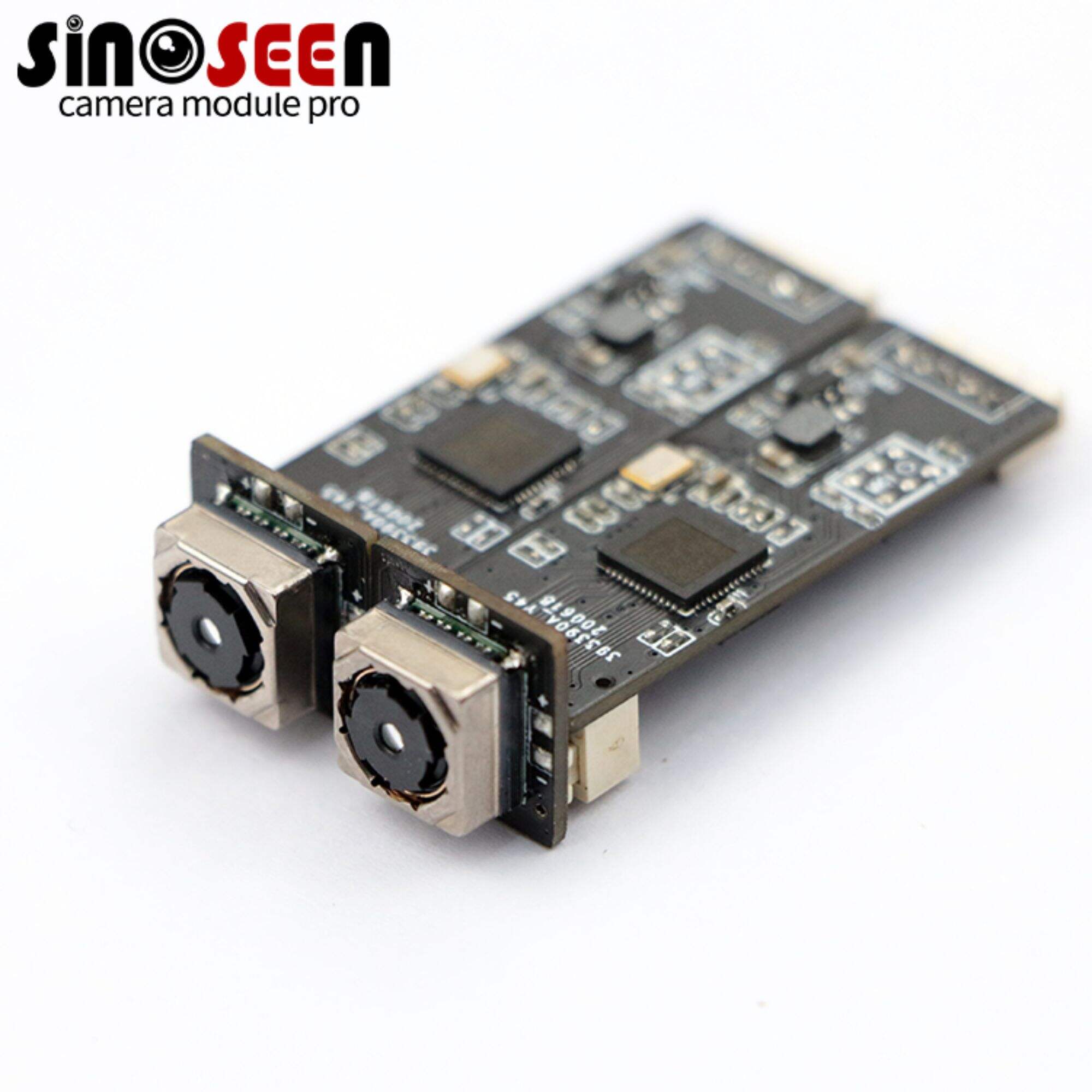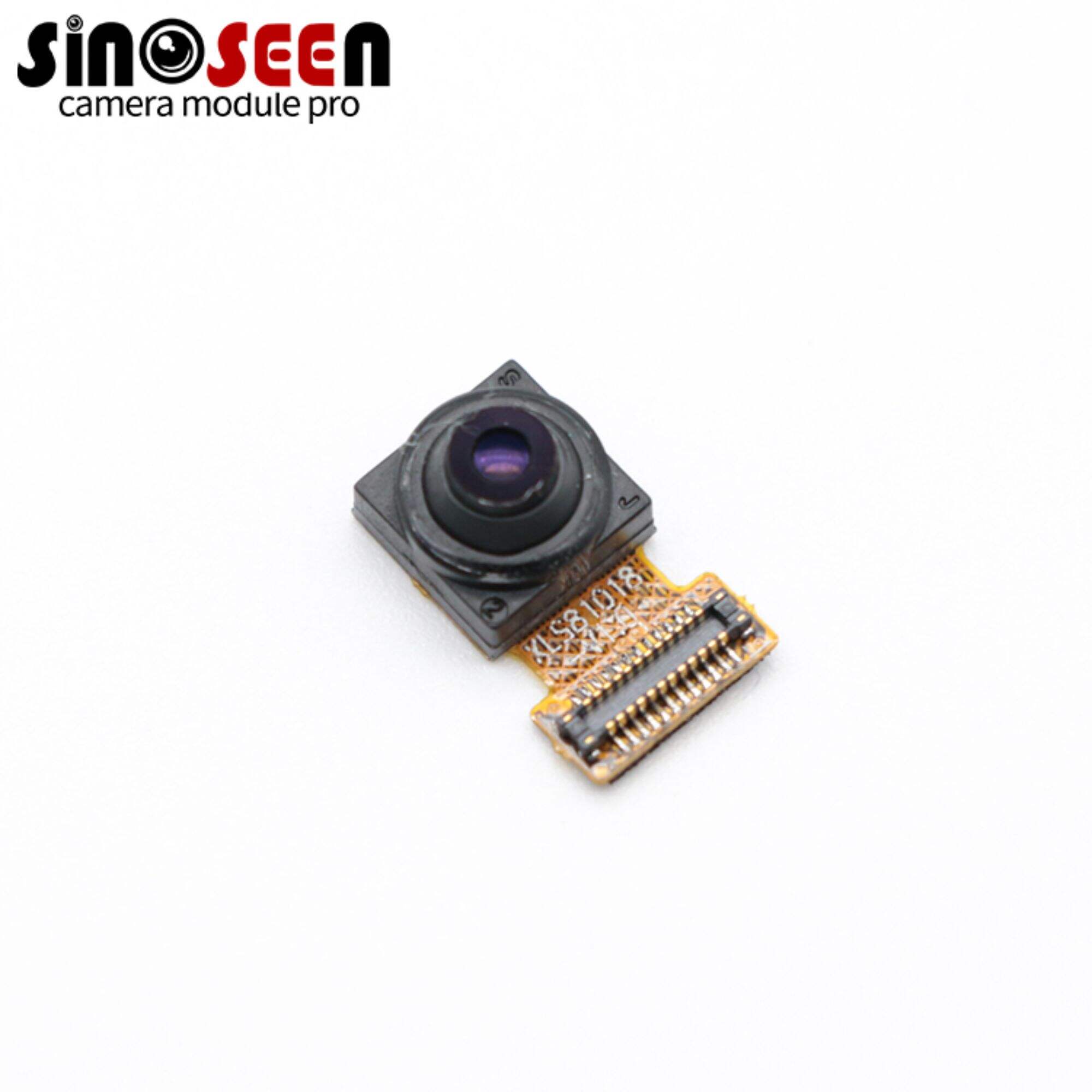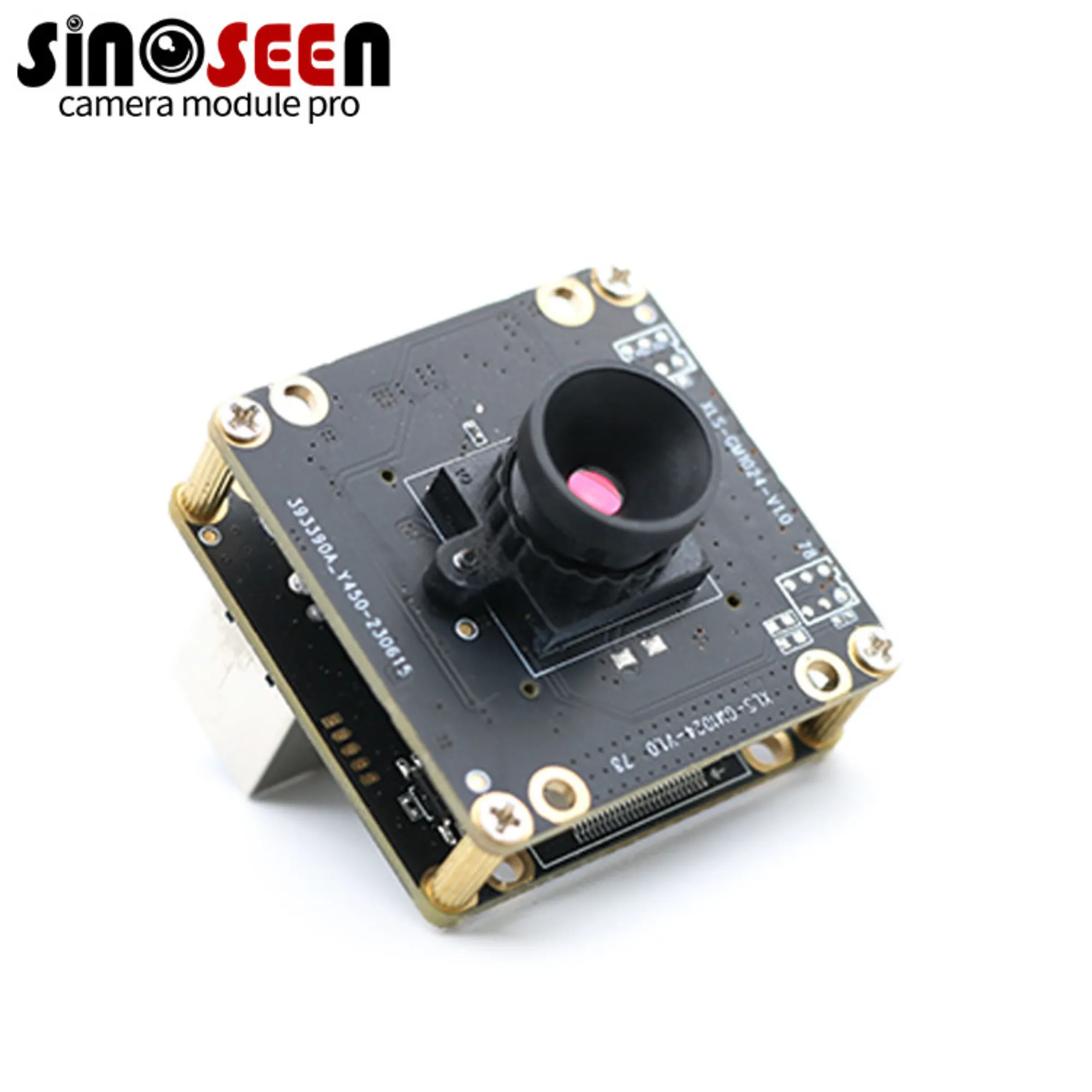12 ميجابكسل مقابل 24 ميجابكسل: ما الفرق؟ وكيف تختار؟
عندما نقوم باختيار هاتف أو كاميرا، يظهر دائمًا مصطلح "ميجابكسل" (MP) في مجال رؤيتنا، وغالبًا ما ترى كاميرات بدقة 12 ميجابكسل أو 24 ميجابكسل وحتى أعلى. إذن ما هو الفرق بين كاميرا 12 ميجابكسل و24 ميجابكسل؟ إن اختيار دقة البكسل المناسبة له تأثير واضح على جودة الصورة، ولكن هل يعني عدد البكسلات الأعلى حقًا صورًا أفضل؟
وبصفتي مهندس كاميرات متخصص في أداء الميجابكسل، سأقوم بتحليل التفاصيل التقنية بطريقة سهلة الفهم، وأوفر لك رؤى عميقة لتساعدك على اتخاذ قرار مناسب لاحتياجاتك.
في هذه المقالة، سنتحدث عن الفروق الرئيسية بين الكاميرات بدقة 12 ميجابكسل و24 ميجابكسل، بما في ذلك تأثير الميجابكسل على حجم الملف ووضوح الصورة والحساسية.
ماذا يعني الميجابكسل؟
أولًا، دعونا نفهم ما هي الميجا بكسل (MP). MP هو اختصار لـ "ميجا بكسل"، وهو يشير إلى العدد الإجمالي للبكسلات التي تتكون منها الصورة. مليون بكسل تساوي ميجا بكسل واحدة. كما يشير إلى عدد المواقع البصرية الموجودة على مستشعر الصورة، والتي تشكل الصور التي نراها. كلما زاد عدد الميجا بكسل، زاد عدد البكسلات في الصورة، وبالتالي يمكن التعبير عن وضوح وتفاصيل أكبر في الصورة.
بكلمات بسيطة:
- تحتوي صورة من كاميرا بدقة 12 ميجا بكسل على ما يقارب 12 مليون بكسل فردي (على سبيل المثال، 4000×3000 بكسل).
- تحتوي صورة من كاميرا بدقة 24 ميجا بكسل على ما يقارب 24 مليون بكسل (على سبيل المثال، 6000×4000 بكسل).
من الأرقام، يبدو أن صورة بدقة 24 ميجابكسل تحتوي على عدد بكسلات أكبر من صورة بدقة 12 ميجابكسل. ومع ذلك، فإن زيادة عدد البكسلات لا تعني بالضرورة تحسن جودة الصورة. تؤثر البكسلات على حجم ووضوح الصورة، لكن هناك عناصر أخرى في الكاميرا تؤثر أيضًا على جودة الصورة مثل حجم المستشعر والإضاءة وجودة العدسة. لا تعاني Sinoseen من هذه المشاكل لأن التصميم والتصنيع يتم فحصهما بعناية لضمان نتائج مرضية.

فهم دقة 12 ميجابكسل
كما يتضح من الأرقام، تستطيع كاميرا 12 ميجابكسل التقاط 12 مليون بكسل من الصور بتفاصيل غنية، ما يُلبي معظم الاستخدامات اليومية، بما في ذلك صور مواقع التواصل الاجتماعي والفيديوهات وغيرها. ورغم وجود فرق واضح بين صور 12 ميجابكسل والصور عالية الدقة، إلا أنها تُحقق توازنًا جيدًا بين جودة الصورة وحجم الملف، وهو ما يكفي للاستخدام اليومي.
فهم دقة 24 ميجابكسل
يمكن للكاميرا التي تبلغ دقتها 24 ميجا بكسل أن تلتقط صورًا بدقة 24 مليون بكسل، وهي بذلك تحتوي على أعلى عدد من الميجا بكسل في دقة الكاميرات وتفاصيل أكثر غنىً من كاميرا 12 ميجا بكسل. كما أنها الاختيار الأنسب للتطبيقات التي تتطلب تفاصيل أكثر غنىً وصورًا أكثر وضوحًا، خاصة عندما تحتاج إلى التكبير أو الطباعة بحجم أكبر.

الفرق الرئيسي بين 12 مليون بكسل و24 مليون بكسل
دعونا نقارن الفروق بين كاميرات 12 ميجا بكسل و24 ميجا بكسل من الجوانب التالية:
- القدرة على التقاط التفاصيل والتكبير
- حجم الملف والمساحة التخزينية
- الأداء في الإضاءة المنخفضة وضوضاء الصورة
- سرعة معالجة الصور والأداء العام للأجهزة
- تأثير التسجيل المرئي
دعونا نحلل هذه الجوانب واحدًا تلو الآخر.
1. القدرة على التقاط التفاصيل والتكبير
بسبب امتلاكها عددًا أكبر من البكسلات، يمكن للكاميرا التي تبلغ دقتها 24 ميجا بكسل نظريًا التقاط تفاصيل أدق. ويكون هذا واضحًا بشكل خاص عندما تحتاج إلى تكبير الصور للمشاهدة أو إنتاج طباعة بحجم كبير. وعند قص صورة ما، فإن الصورة ذات الدقة 24 ميجا بكسل يمكنها الحفاظ على عدد أكبر من البكسلات المتاحة، بحيث يمكن للصورة المصقورة أن تحتفظ بوضوح جيد.
للنشر اليومي على وسائل التواصل الاجتماعي، أو المشاهدة على شاشات الهواتف المحمولة، أو الطباعة بالأحجام القياسية، فإن دقة الكاميرا التي تبلغ 12 ميجا بكسل تكون عادة كافية. وفي هذه الحالات، لا يكون الفرق في أداء التفاصيل بين الصور بدقة 12 ميجا بكسل والصور بدقة 24 ميجا بكسل سهل الكشف.
2. حجم الملف والمساحة المخصصة للتخزين
يعني ازدياد عدد البكسلات زيادةً في حجم الملف. تكون صورة الكاميرا بدقة 24 ميجا بكسل عمومًا ضعف حجم صورة الكاميرا بدقة 12 ميجا بكسل تقريبًا. وهذا يستهلك مساحة تخزين أكبر على الجهاز وعلى السحابة، كما يستهلك المزيد من بيانات الإنترنت والوقت عند الرفع أو التنزيل.
حجم صور الدقة 12 ميجا بايت يكون نسبيًا صغيرًا، مما يجعلها أسهل في التخزين والنقل والمشاركة. بالنسبة للمستخدمين الذين يمتلكون مساحة تخزين محدودة أو يحتاجون إلى مشاركة الصور بشكل متكرر، فإن لدقة 12 ميجا ميزة أكبر.
3. الأداء في الإضاءة المنخفضة وضوضاء الصورة
هذا مكان يُساء فهمه غالبًا. يعتقد كثير من الناس أن ارتفاع عدد البكسلات يعني أداءً أفضل في الإضاءة المنخفضة، ولكن هذا ليس هو الحال دائمًا.
عند استخدام نفس حجم المستشعر، كلما زاد عدد البكسلات، قل حجم البكسل الفردي. وكلما زاد حجم البكسل الفردي، زادت كمية المعلومات الضوئية التي يمكنه التقاطها، مما يؤدي إلى تقليل الضوضاء في البيئات ذات الإضاءة المنخفضة والحفاظ على نقاء الصورة.
على سبيل المثال، على مستشعر إطار كامل بنفس الحجم، قد يكون حجم البكسل الفردي في كاميرا بدقة 12 ميجا بكسل أكبر بكثير من ذلك الموجود في كاميرا بدقة 24 ميجا بكسل.
ومع ذلك، يمكن أن تحسن المستشعرات الحديثة ذات الدقة العالية الأداء في الإضاءة المنخفضة من خلال دمج عدة بكسلات صغيرة في "بكسلة كبيرة" واحدة باستخدام تقنيات مثل "دمج البكسلات (Pixel Binning)". على سبيل المثال، يمكن لبعض مستشعرات الهواتف الذكية بدقة 48 ميجا بكسل أو 64 ميجا بكسل أن تُخرج صورًا بدقة 12 ميجا بكسل مع أخذ الأداء في الإضاءة المنخفضة بعين الاعتبار عبر استخدام تقنية دمج 4 بكسلات في 1 أو 9 بكسلات في 1.
أما المستشعرات التقليدية بدقة 12 ميجا بكسل، فإذا كانت مساحة البكسلة الفردية أكبر، فقد يكون لديها نسبة أفضل بين الإشارة والضوضاء في البيئات ذات الإضاءة المنخفضة وتنتج صورًا أكثر نقاءً.
وبالتالي، عند تقييم الأداء في الإضاءة المنخفضة، فإن عدد الميجا بكسل ليس هو العامل الوحيد، بل من الأهمية بمكان النظر إلى الحجم الفعلي للمستشعر والتكنولوجيا التي يستخدمها المصنّع في معالجة الصورة. حتى الكاميرا ذات عدد الميجا بكسل الأعلى قد لا تكون دائمًا الأفضل أداءً في الإضاءة المنخفضة.
4. سرعة معالجة الصور والأداء الخاص بالجهاز
تتطلب معالجة وتخزين الصور بدقة أعلى عدد من الميجا بكسل مثل 24 ميجا بكسل معالجاً أقوى وذاكرة تخزين مؤقتة أكبر. هذا يعني أن الجهاز قد يستغرق وقتاً أطول لمعالجة الصور أو التقاطها بشكل متسلسل، أو قد تظهر بعض التأخيرات أثناء التشغيل.
تحتوي صور 12 ميجا بكسل على كمية بيانات أصغر وعادة ما يتم معالجتها بسرعة أكبر، مما يساعد على تشغيل الجهاز بسلاسة والاستجابة السريعة.
5. تأثير تسجيل الفيديو
يؤثر عدد الميجا بكسل بشكل رئيسي على دقة الصور، لكنه له تأثير نسبياً صغير على دقة الفيديو. عادةً تقاس دقة الفيديو بوحدة K (مثل 4K، 8K).
- فيديو 4K: يتطلب فيديو 4K حوالي 8 ميجا بكسل من دقة المستشعر لتسجيله. لذلك سواء كان المستشعر بدقة 12 ميجا بكسل أو 24 ميجا بكسل أو حتى أكثر، فإنه يمكنه تسجيل فيديو 4K بسهولة.
- فيديو 8K: يتطلب فيديو 8K حوالي 33 ميجا بكسل. فقط المستشعرات التي تبلغ دقتها 33 ميجا بكسل أو أكثر يمكنها تسجيل فيديو 8K بشكل طبيعي.
اختر بين 12 ميجا بكسل و24 ميجا بكسل؟ إليك 5 نصائح عملية لمساعدتك في الاختيار
بعد فهم الاختلافات الرئيسية بين 12 ميجابكسل و 24 ميجابكسل، قد لا تزال غير متأكد من أيهما الأفضل لك. إليك 5 نصائح عملية لتأخذها بعين الاعتبار عند اتخاذ قرارك:
1. حدد الاستخدام الرئيسي
المشاركة اليومية والمشاهدة على الشاشة: إذا كنت تشارك الصور بشكل رئيسي على وسائل التواصل الاجتماعي وتراها على شاشة الهاتف أو الحاسوب، فإن دقة 12 ميجابكسل تكون عادةً أكثر من كافية. معظم الشاشات تمتلك دقة أقل بكثير من 12 ميجابكسل، ولا يؤدي وجود بكسلات إضافية إلى تحسين ملحوظ في جودة الصورة.
الطباعة بحجم كبير والمراجعة الاحترافية بعد التصوير: إذا كنت تحتاج إلى طباعة الصور بحجم A3 أو أكبر، أو تقوم بالتقاط أجزاء كبيرة من الصور وتحتاج إلى تفاصيل غنية في الصور المحذوفة، فإن الكاميرا التي تبلغ دقتها 24 ميجابكسل أو أعلى ستكون خيارًا أفضل.
2. خذ في الاعتبار مساحة التخزين وظروف الشبكة لديك
ضغط التخزين: صور 24 ميجابكسل تكون ضعف حجم صور 12 ميجابكسل، مما يعني أنها ستملأ ذاكرة الجهاز أو تخزين السحابة بسرعة إذا كنت تحتفظ بعدد كبير من الصور.
سرعة الرفع والتنزيل: تستغرق الملفات الأكبر وقتًا أطول وحركة بيانات أكثر عند الرفع إلى وسائل التواصل الاجتماعي أو السحابة أو التنزيل. إذا كنت تشارك الصور بشكل متكرر عبر شبكات الجوال، فإن الدقة 12 ميجا بكسل ستكون أكثر راحة.

3. افهم الحجم الفعلي لمستشعر الكاميرا، وليس فقط عدد البكسلات
عدد البكسلات العالية لا يعني دائمًا جودة صورة عالية. عند اختيار الجهاز، بالإضافة إلى عدد البكسلات، تأكد من التحقق من الحجم الفعلي لمستشعر الكاميرا. عمومًا، عند نفس عدد البكسلات، كلما زاد حجم المستشعر، زادت مساحة البكسل الواحد (نقطة البكسل)، وبالتالي زادت قدرته على امتصاص الضوء، مما يعطي أداءً أفضل في الإضاءة المنخفضة وجودة أعلى للصورة.
4. انتبه لتكنولوجيا معالجة الصور الخاصة بالشركة المصنعة
يمكن للهواتف الذكية والأجهزة الحديثة تعويض الفروق في الأجهزة من خلال خوارزميات معالجة الصور القوية. على سبيل المثال، يمكن لهاتف ذكي بدقة 12 ميجا بكسل التقاط صور رائعة باستخدام تقنيات التصوير الحاسوبي (مثل HDR، وضعية المشهد الليلي). لا تنظر فقط إلى عدد البكسلات، بل انظر إلى نماذج فعلية ومراجعات مهنية للكاميرات.
5. الميزانية وأداء الجهاز
بشكل عام، قد يؤدي استخدام مستشعرات بكسل أعلى ومعالجات أقوى لمعالجة هذه الملفات الكبيرة إلى ارتفاع تكلفة الجهاز. وفي الوقت نفسه، تتطلب الصور عالية الدقة أداءً أعلى من الجهاز، وقد تظهر الأجهزة القديمة بطيئة عند معالجة صور بدقة 24 ميجا بكسل أو أعلى. اختر الجهاز بحكمة بناءً على ميزانيتك وأداء الأجهزة التي تمتلكها بالفعل.
أي منهما يناسبك أكثر؟
| المميزات | كاميرا 12 ميجا بكسل | كاميرا 24 ميجا بكسل |
| التفاصيل والقص | مناسبة للمشاهدة اليومية ومشاركة وسائل التواصل الاجتماعي والطباعة بحجم قياسي. مساحة محدودة للقص. | أكثر ملاءمة للطباعة بحجم كبير أو المشاهد التي تحتاج إلى الحفاظ على التفاصيل بعد التحرير المكثف. |
| حجم الملف | الملفات الصغيرة توفر مساحة تخزين وسهلة المشاركة والنقل. | الملفات الكبيرة تستهلك مساحة تخزين أكبر وتحتاج إلى حركة بيانات أكثر. |
| الأداء في الإضاءة المنخفضة | نظريةً، تكون وحدات البكسل الفردية الأكبر أداءً أفضل في الإضاءة المنخفضة (يعتمد على حجم المستشعر والتكنولوجيا). | نظريةً، وحدات بكسل فردية أصغر، ولكن التكنولوجيا المتقدمة لدمج البكسل يمكن أن تحسن الأداء في الإضاءة المنخفضة. |
| سرعة المعالجة | سرعة معالجة سريعة واستجابة أكثر سلاسة من الجهاز. | سرعة المعالجة بطيئة نسبيًا، ومطالب أعلى بأداء الجهاز. |
| إمكانية تسجيل الفيديو | يدعم بسهولة تسجيل الفيديو بدقة 4K. | يدعم بسهولة تسجيل الفيديو بدقة 4K، وبعض الكاميرات عالية الدقة يمكنها دعم التسجيل بدقة 8K. |
الاستنتاج
باختصار، لا يعني ارتفاع عدد الميجابكسل جودة أفضل. نأمل أن يساعدك هذا المقال في فهم الاختلاف الحقيقي بين 12 ميجابكسل و24 ميجابكسل. يعتمد الاختيار النهائي على الاستخدام المحدد والموازنة الخاصة بك، واحتياجاتك المتعلقة بتفاصيل الصورة وحجم الملف والأداء العام للجهاز. عند شراء المعدات، بالإضافة إلى الانتباه إلى عدد الميجابكسل، يجب أيضًا مراعاة الحجم الفعلي للاستشعار وجودة العدسة وخوارزمية المعالجة الخاصة بالصورة من قبل الشركة المصنعة، وهي عوامل مهمة أيضًا في تحديد جودة الصورة النهائية.
وحدات كاميرات Sinoseen بدقة 12 ميجابكسل و24 ميجابكسل
إذا كنت تبحث عن وحدة كاميرا التي تلبي المواصفات الخاصة بك، يمكن لشركة Sinoseen مساعدتك. عندما تكون متطلباتك واضحة، فإننا نقدم عروض أسعار في نفس اليوم لضمان سير مشروعك بسلاسة. وإذا لم تكن متطلباتك واضحة، فلا بأس، حيث سيقدم لك مهندسونا المساعدة الكاملة. إذا كنت بحاجة لذلك، يرجى ذلك اتصل بنا في أقرب وقت ممكن .
منتجات موصى بها
أخبار ساخنة
-
الصين الرائدة في تصنيع وحدات الكاميرا التي تدعم تصوير الأجهزة—Sinoseen
2024-03-27
-
دليل التخصيص النهائي لأجهزة وحدات الكاميرا OEM
2024-03-27
-
فهم عميق لوحدات الكاميرا
2024-03-27
-
كيف تقلل من دقة وحدة الكاميرا؟
2024-12-18

 EN
EN
 AR
AR
 DA
DA
 NL
NL
 FI
FI
 FR
FR
 DE
DE
 EL
EL
 HI
HI
 IT
IT
 JA
JA
 KO
KO
 NO
NO
 PL
PL
 PT
PT
 RO
RO
 RU
RU
 ES
ES
 SV
SV
 TL
TL
 IW
IW
 ID
ID
 SR
SR
 VI
VI
 HU
HU
 TH
TH
 TR
TR
 FA
FA
 MS
MS
 IS
IS
 AZ
AZ
 UR
UR
 BN
BN
 HA
HA
 LO
LO
 MR
MR
 MN
MN
 PA
PA
 MY
MY
 SD
SD

